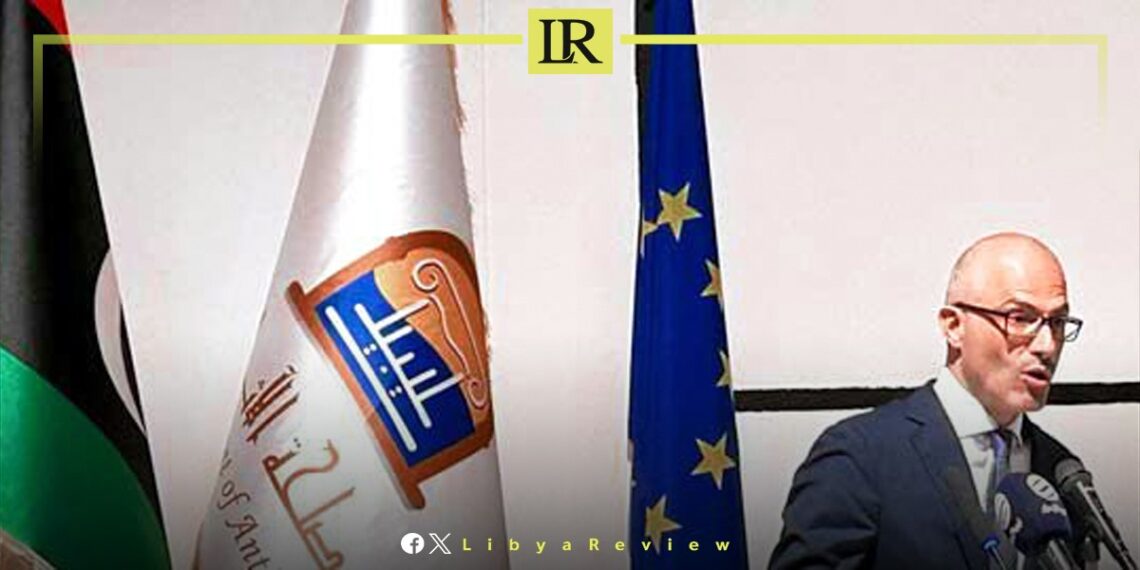The European Union Ambassador to Libya, Nicola Orlando, has called for the protection of Libyan cultural heritage from looting, trafficking, and vandalism.
Orlando inaugurated an international conference on the protection of Libyan cultural heritage in Tripoli on Sunday, with the participation of 20 experts from five European countries.
Among the participants were archaeological missions, and representatives from law enforcement agencies from Italy, in cooperation with the Department of Antiquities and Tourist Police of the Ministry of Interior.
“Libyan cultural heritage is extraordinary. It belongs to all Libyans and to humanity. It represents our rich, common Mediterranean roots. Its economic and employment potential is remarkable,” he said.
“This is why together we must protect it from looting, trafficking and vandalism,” he added.
He emphasised that the European Union and its member states are proud of their partnership to protect and preserve Libyan cultural heritage, contributing to national unity and reconciliation.
In March, Libya successfully reclaimed a treasured funerary statue from France, stolen in 2016 from the historic city of Shahhat. This event marks a significant victory in the ongoing battle against the illegal trade of cultural artifacts and emphasizes the importance of global efforts in protecting heritage.
The statue, dating back to the 4th century BCE, represents not just a piece of Libyan history but also a testament to the rich cultural fabric that weaves through the nation’s past. Its theft and subsequent return from the Louvre Museum in Paris underscore the challenges and triumphs in the quest to safeguard cultural treasures.
On his part, the Head of the Administrative Control Authority, Abdullah Qaderbuh, officially received the artifact at Mitiga International Airport, showcasing the fruits of concerted efforts between Libyan and French authorities.
This collaboration, involving France’s Ministry of Foreign Affairs, Customs Service, and the Louvre Museum, illustrates the complexities and dedication involved in repatriating cultural items.
The journey of this artifact from its theft in Shahhat to its residency in the Louvre and finally back to Libyan soil reflects the larger issue of artifact smuggling. This is a problem that has plagued countries with rich historical legacies. Libya, home to numerous ancient sites, has faced significant challenges in protecting its archaeological heritage amid political instability.
Beyond its significance to Libya’s archaeological community, the return of the statue is a powerful statement against the global black market in stolen artifacts. It reinforces the idea that cultural heritage transcends national boundaries, belonging to humanity as a whole and warranting universal efforts to protect and preserve it.


